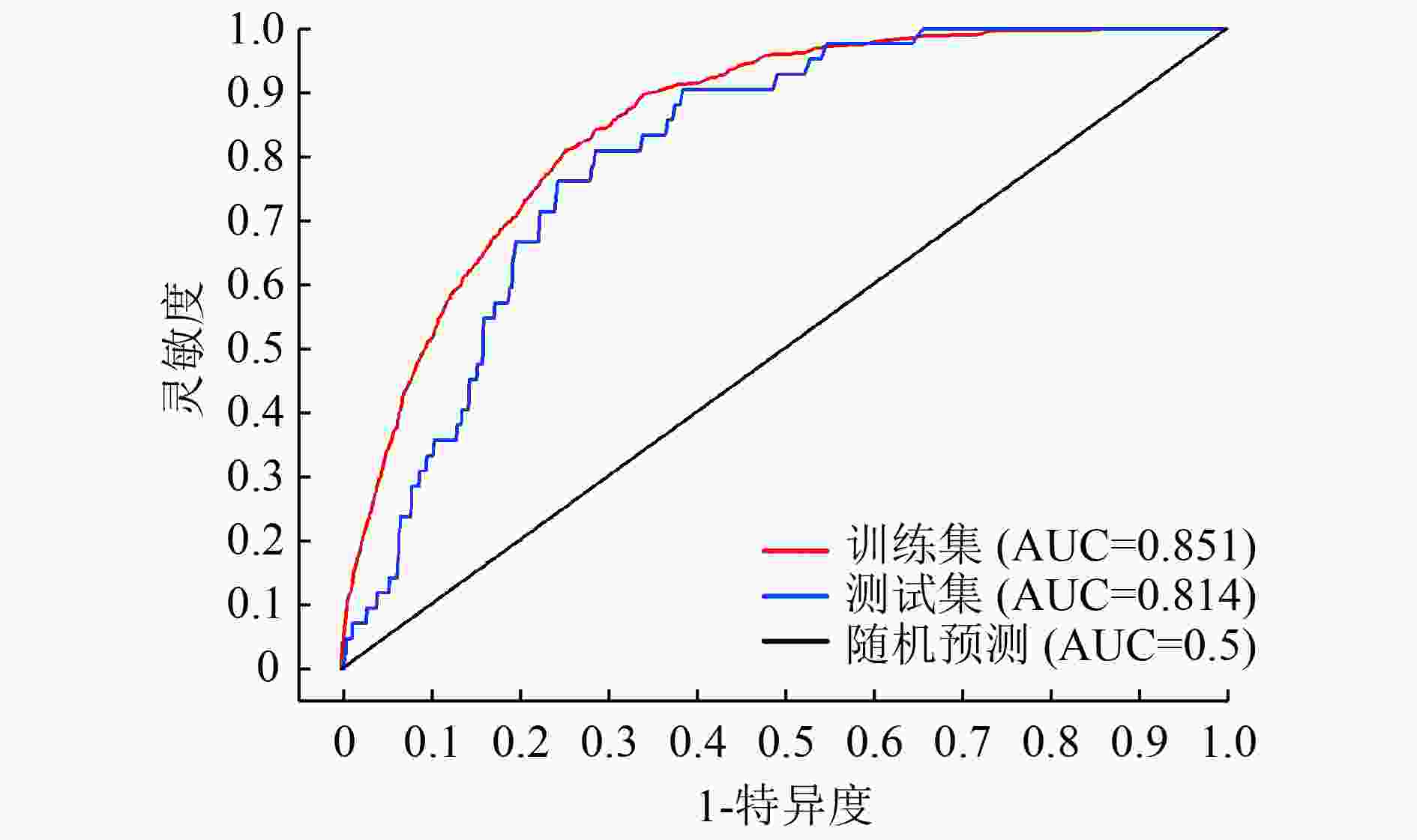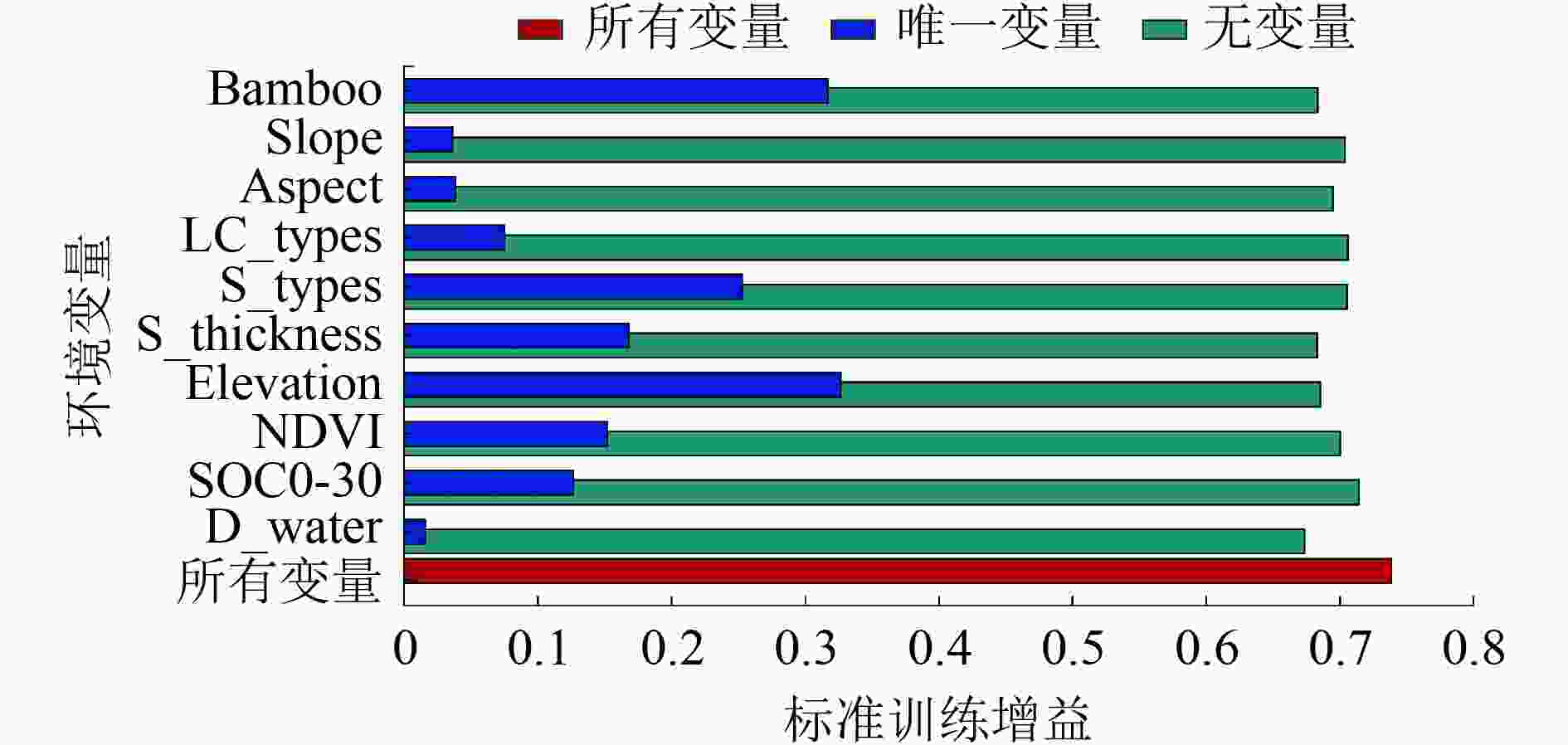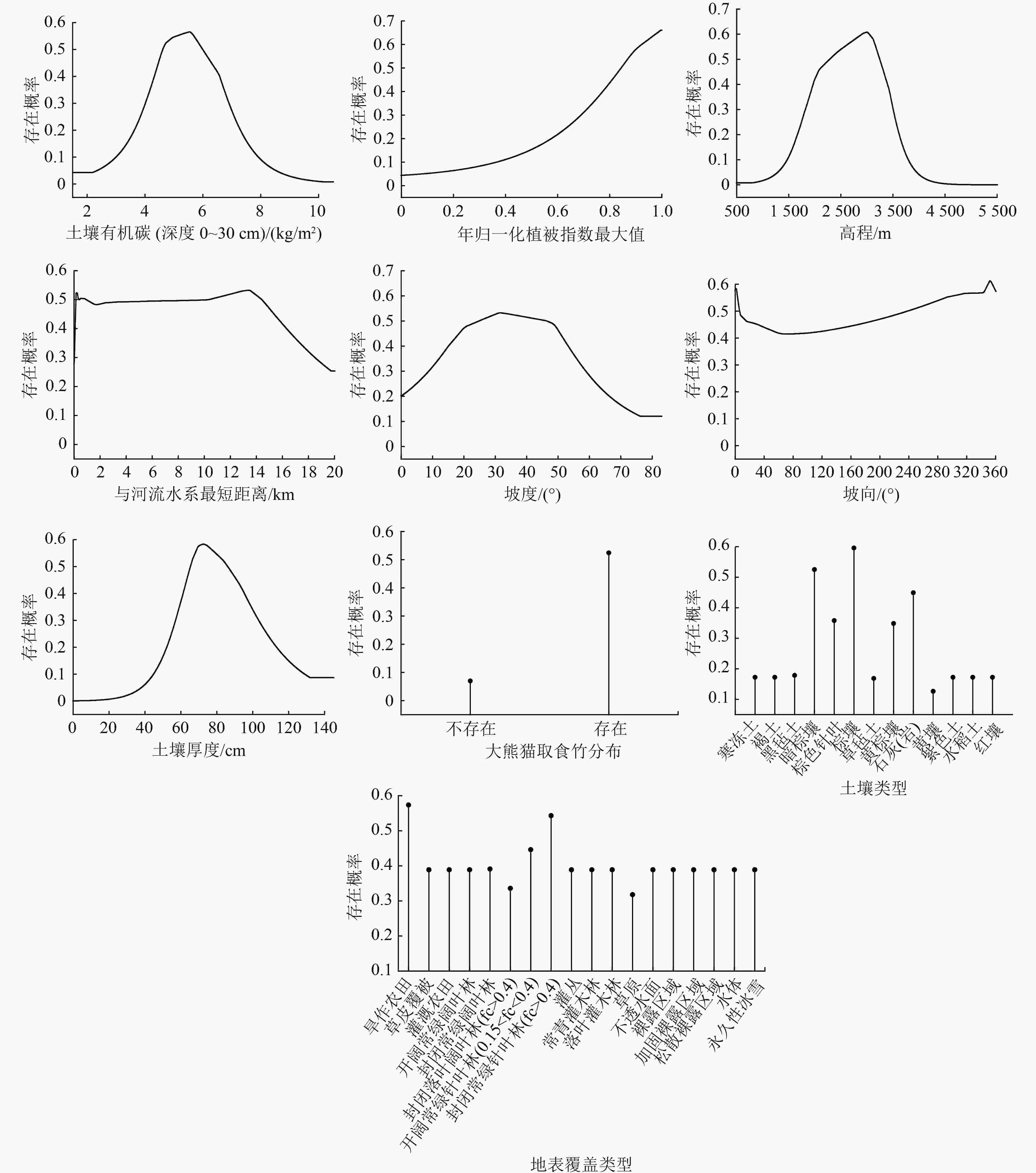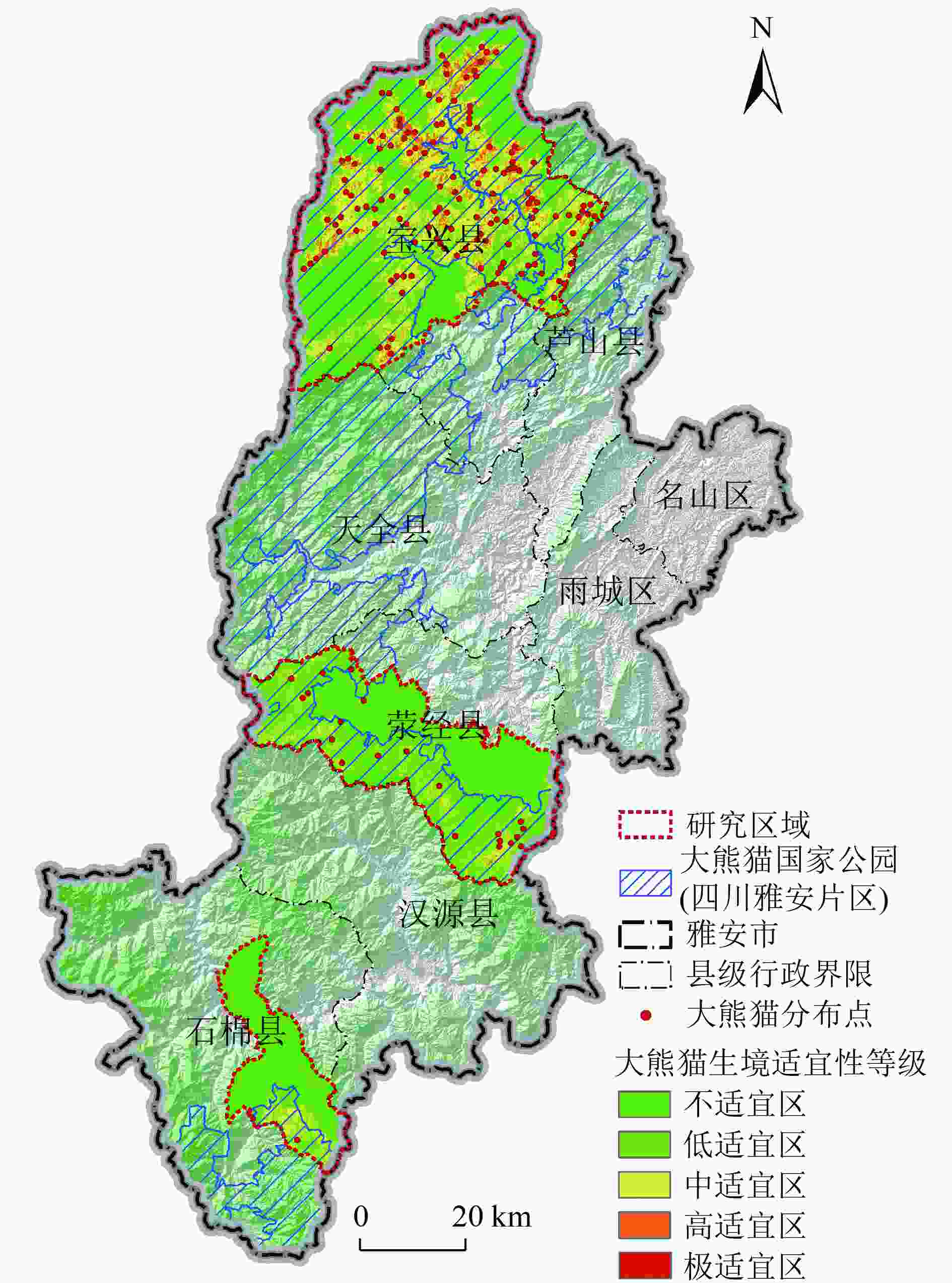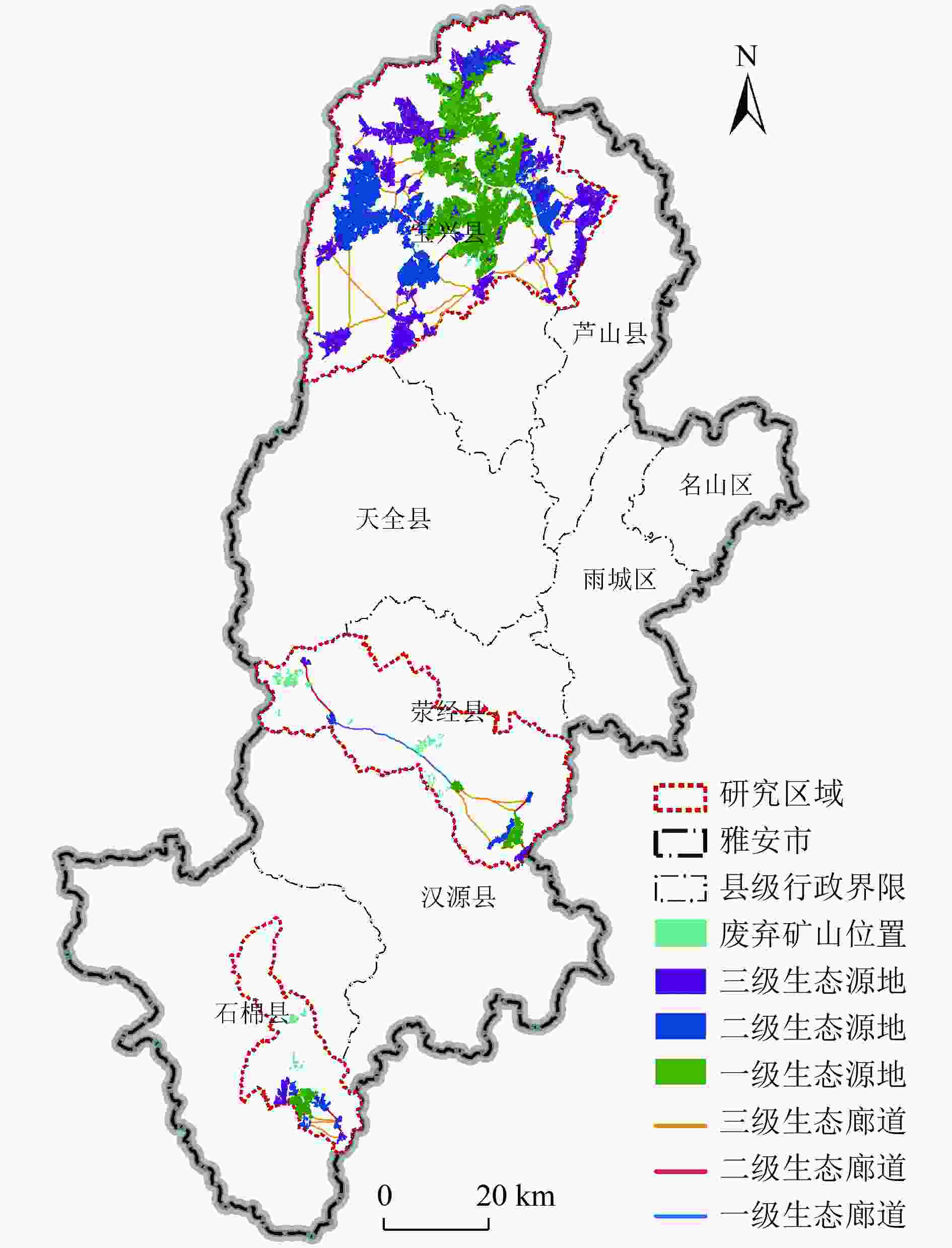Ecological restoration of abandoned mines within giant panda habitat based on Maxent model and circuit theory
-
摘要:
为提高大熊猫栖息地内废弃矿山的生态修复效率和针对性,基于最大熵(Maxent)模型和电路理论,以大熊猫国家公园(四川雅安片区)历史遗留废弃矿山生态修复示范工程项目区域为研究区,对大熊猫适宜生境及影响生境的主要环境变量进行分析,识别生态源地与生态廊道,并提出相应的生态修复策略。结果显示:大熊猫取食竹分布、高程、土壤类型及厚度是影响区域内大熊猫生境的4个主要环境变量,其最适宜生境条件为存在大熊猫取食竹、高程为2 290~3 250 m、土壤类型为暗棕壤或棕壤、土壤厚度为65~86 cm;研究区内不适宜及低适宜区面积占比为75.96%,区域废弃矿山范围内不适宜及低适宜区占比为92.23%,大熊猫适宜生境较为破碎;研究区生态源地数量多且分散,生态廊道数量多且长,其分布受到废弃矿山等因素的影响;区域废弃矿山生态修复时,应分别从区域整体和环境变量出发,重点修复宝兴区域及荥经、石棉区域的一级生态源地和廊道,修复时主要考虑取食竹分布、高程、土壤类型及厚度等对大熊猫生境影响较大的环境变量,并参考其最适宜生境条件为目标进行修复,修复完成后需加强监测管护。该方法能够发现大熊猫适宜生境的环境条件和分布范围,确定重点生态修复区域及修复策略,以此提高修复效率和质量,促进大熊猫等珍稀野生动物种群的恢复和繁衍。
Abstract:In order to improve the efficiency and pertinence of ecological restoration of abandoned mines in the habitat of giant pandas, based on Maxent model and circuit theory, the ecological restoration demonstration project area of abandoned mines within Giant Panda National Park (Ya'an region, Sichuan) was taken as the research zone. The suitable habitats for giant pandas and the main environmental variables affecting the habitat of giant pandas were analyzed, the ecological sources and ecological corridors were identified, and the corresponding ecological restoration strategies were proposed. The results showed that the distribution of bamboo for giant pandas, elevation, soil type, and soil thickness were the four main environmental variables affecting the habitat of giant pandas in the area, and the most suitable habitat conditions were the existence of bamboo for giant pandas, an elevation of 2 290-3 250 m, a soil type of dark brown soil or brown soil, and a soil thickness of 65-86 cm. The area of unsuitable and low-suitable areas accounted for 75.96% of the study area, and the area of unsuitable and low-suitable areas within the abandoned mines accounted for 92.23%. The suitable habitat of giant pandas was relatively fragmented. The study area had a large number of scattered ecological sources and long ecological corridors, and their distribution was affected by abandoned mines and other factors. During the ecological restoration of the abandoned mines in the area, it is necessary to start from the overall situation and environmental variables of the area, focusing on the restoration of the primary ecological sources and corridors in the Baoxing area and the Yingjing and Shimian areas. During the restoration process, it is necessary to consider the environmental variables that have a greater impact on the habitat of giant pandas, such as bamboo for food, elevation, soil type, and thickness, and refer to the most suitable habitat conditions as the target for restoration. After the restoration is completed, it is necessary to strengthen monitoring and management. This method can obtain the environmental conditions and distribution range of the suitable habitat of giant pandas, determine the key ecological restoration areas and restoration strategies, and improve the efficiency and quality of restoration, thus promoting the recovery and reproduction of rare wild animal populations such as giant pandas.
-
Key words:
- giant panda /
- abandoned mine /
- ecological restoration /
- Maxent model /
- circuit theory
-
表 1 环境变量信息
Table 1. Environmental variable information table
环境变量 简称 空间精度/m 大熊猫取食竹分布 Bamboo — 高程/m Elevation 12.5 坡度/(°) Slope 12.5 坡向/(°) Aspect 12.5 地表覆盖类型 LC_types 30 与河流水系最短距离/m D_water 90 年归一化植被指数最大值 NDVI 30 土壤厚度/cm S_thickness 90 土壤类型 S_types 1 000 土壤有机碳/(g/m2) 深度0~5 cm SOC0-5 90 深度5~15 cm SOC5-15 90 深度15~30 cm SOC15-30 90 表 2 环境变量相对贡献统计
Table 2. Statistical table of relative contributions of environmental variables
环境变量 贡献率/% 排列重要性/% 大熊猫取食竹分布 44.0 18.0 土壤类型 13.4 7.8 高程 7.8 22.7 土壤厚度 7.6 20.0 与河流水系最短距离 5.9 10.3 年归一化植被指数最大值 5.9 4.3 坡向 4.9 4.2 地表覆盖类型 4.3 3.5 坡度 4.2 5.3 土壤有机碳(深度0~30 cm) 2.1 3.9 表 3 生态源地分级统计
Table 3. Statistical table of ecological source classification
区域 生态源地
等级数量/个 数量
占比/%面积/
km2面积
占比/%平均
面积/km2宝兴区域 一级 1 1.11 245.67 35.52 245.67 二级 15 16.67 161.87 23.40 10.79 三级 59 65.56 236.77 34.23 4.01 荥经区域 一级 2 2.22 10.67 1.54 5.34 二级 3 3.33 6.89 1.00 2.30 三级 2 2.22 3.56 0.51 1.78 石棉区域 一级 2 2.22 11.52 1.67 5.76 二级 4 4.45 7.89 1.14 1.97 三级 2 2.22 6.83 0.99 3.42 表 4 生态廊道分级统计
Table 4. Statistical table of ecological corridor grades
区域 生态廊道
等级数量/条 数量
占比/%长度/m 长度
占比/%平均
长度/m宝兴区域 一级 15 9.09 1 960 0.72 131 二级 33 20.00 8 648 3.17 262 三级 96 58.18 165 882 60.82 1 728 荥经区域 一级 2 1.21 26 843 9.84 13 422 二级 3 1.82 14 243 5.22 4 748 三级 3 1.82 35 879 13.16 11 960 石棉区域 一级 2 1.21 42 0.02 21 二级 6 3.64 3 586 1.31 598 三级 5 3.03 15 651 5.74 3 130 -
[1] 王伟月, 宋仕贤, 何秋千. 大熊猫档案管理存在的问题及解决对策研究: 以中国大熊猫保护研究中心为例[J]. 四川档案,2022(6):27-28. [2] 雅安市人民政府. 大熊猫国家公园(四川雅安片区)历史遗留废弃矿山生态修复示范工程项目实施方案[R]. 雅安: 雅安市人民政府, 2022. [3] 张进德, 郗富瑞. 我国废弃矿山生态修复研究[J]. 生态学报,2020,40(21):7921-7930.ZHANG J D, XI F R. Study on ecological restoration of abandoned mines in China[J]. Acta Ecologica Sinica,2020,40(21):7921-7930. [4] 彭世良. 地质公园景观资源系统综合评价及生态修复策略研究: 以湖南湄江国家地质公园为例[D]. 武汉: 中国地质大学(武汉), 2020. [5] 罗明, 张世文, 魏洪斌, 等. 基于IUCN《矿山生物多样性管理系列指南》的大宝山矿生态修复实践研究[J]. 地学前缘,2021,28(4):90-99.LUO M, ZHANG S W, WEI H B, et al. Ecological restoration of the Dabaoshan Mine based on IUCN biodiversity management guidelines[J]. Earth Science Frontiers,2021,28(4):90-99. [6] 马跃. 废弃矿山资源化生态修复模式构建与效益评价[D]. 大连: 大连理工大学, 2022. [7] 孙瑜. 大熊猫栖息地质量评价及潜在廊道研究[D]. 北京: 北京林业大学, 2014. [8] 刘兰妹. 秦岭地区大熊猫种群变化及栖息地消长状态研究[D]. 北京: 清华大学, 2019. [9] 许仲林, 彭焕华, 彭守璋. 物种分布模型的发展及评价方法[J]. 生态学报,2015,35(2):557-567.XU Z L, PENG H H, PENG S Z. The development and evaluation of species distribution models[J]. Acta Ecologica Sinica,2015,35(2):557-567. [10] 齐增湘, 徐卫华, 熊兴耀, 等. 基于MAXENT模型的秦岭山系黑熊潜在生境评价[J]. 生物多样性,2011,19(3):343-352. doi: 10.3724/SP.J.1003.2011.10288QI Z X, XU W H, XIONG X Y, et al. Assessment of potential habitat for Ursus thibetanus in the Qinling Mountains[J]. Biodiversity Science,2011,19(3):343-352. doi: 10.3724/SP.J.1003.2011.10288 [11] 黎运喜, 陈佑平, 余凌帆, 等. 基于MaxEnt模型的二郎山廊道大熊猫栖息地适宜性评价[J]. 四川动物,2016,35(6):833-837.LI Y X, CHEN Y P, YU L F, et al. Habitat suitability assessment of Erlangshan giant panda corridor based on MaxEnt modeling[J]. Sichuan Journal of Zoology,2016,35(6):833-837. [12] 杨彪, 张全建, 王彬, 等. 基于MaxEnt模型的雅砻江冬麻豆生境适宜性评价[J]. 生态学报,2020,40(17):6077-6085.YANG B, ZHANG Q J, WANG B, et al. The habitat suitability evaluation of Salweenia bouffordiana based on MaxEnt model[J]. Acta Ecologica Sinica,2020,40(17):6077-6085. [13] PHILLIPS S J, ANDERSON R P, DUDIK M, et al. Opening the black box: an open-source release of Maxent[J]. Ecography,2017,40(7):887-893. doi: 10.1111/ecog.03049 [14] 陈清清. 基于生态安全格局的国土空间生态修复策略研究[D]. 杭州: 浙江大学, 2022. [15] 申国珍, 李俊清, 张明如. 大熊猫栖息地退化生态系统恢复与重建的探讨[J]. 内蒙古农业大学学报(自然科学版),2002,23(1):36-40.SHEN G Z, LI J Q, ZHANG M R. Suggestions for the restoration and reconstruction of degraded ecosystem in giant panda habitat[J]. Journal of Inner Mongolia Agricultural University (Natural Science Edition),2002,23(1):36-40. [16] 四川省林业厅. 四川的大熊猫: 四川省第四次大熊猫调查报告[M]. 成都: 四川科学技术出版社, 2015. [17] 刘良云, 张肖. 2015年全球30米地表覆盖精细分类产品V1.0[DB/OL]. 北京: 中国科学院空天信息创新研究院, 2021. doi: 10.12237/casearth.6123651428a58f70c2a51e48. [18] YANG J L, DONG J W, XIAO X M, et al. Divergent shifts in peak photosynthesis timing of temperate and alpine grasslands in China[J]. Remote Sensing of Environment,2019,233:11395. [19] 潘贤章, 潘恺. 全国土壤标本数据库: 1953—2008[DB/OL]. 南京: 国家地球系统科学数据共享平台-土壤科学数据中心, 2015. doi: 10.12041/geodata.23662529723929.ver1.db. [20] LIU F, WU H Y, ZHAO Y G, et al. Mapping high resolution National Soil Information Grids of China[J]. Science Bulletin,2022,67(3):328-340. doi: 10.1016/j.scib.2021.10.013 [21] LIU F, ZHANG G L, SONG X D, et al. High-resolution and three-dimensional mapping of soil texture of China[J]. Geoderma,2020,361:114061. doi: 10.1016/j.geoderma.2019.114061 [22] 唐小平, 贾建生, 王志臣, 等. 全国第四次大熊猫调查方案设计及主要结果分析[J]. 林业资源管理,2015(1):11-16.TANG X P, JIA J S, WANG Z C, et al. Scheme design and main result analysis of the fouth national survey on giant pandas[J]. Forest Resources Management,2015(1):11-16. [23] 姚骁. 基于GIS的外来物种适生区预测及系统设计[D]. 桂林: 桂林理工大学, 2019. [24] PHILLIPS S J. A brief tutorial on maxent[EB/OL]. (2021-01-25) [2023-04-12]. http://biodiversityinformatics.amnh.org/open_source/maxent. [25] 吴莹婕. 城市密集建成区动物生境及其生态廊道研究: 以成都市为例[D]. 成都: 西南交通大学, 2022. [26] 刘斯媛, 罗勇, 于慧, 等. 川西北长江黄河源区生态安全格局构建及优化[J]. 环境工程技术学报,2023,13(4):1315-1324. doi: 10.12153/j.issn.1674-991X.20220792LIU S Y, LUO Y, YU H, et al. Construction and optimization of ecological security pattern in the source regions of the Yangtze River and the Yellow River in northwestern Sichuan[J]. Journal of Environmental Engineering Technology,2023,13(4):1315-1324. doi: 10.12153/j.issn.1674-991X.20220792 [27] 张泽钧, 胡锦矗, 吴华. 邛崃山系大熊猫和小熊猫生境选择的比较[J]. 兽类学报,2002,22(3):161-168. doi: 10.3969/j.issn.1000-1050.2002.03.001ZHANG Z J, HU J C, WU H. Comparison of habitat selection of giant pandas and red pandas in the Qionglai Mountains[J]. Acta Theriologica Sinica,2002,22(3):161-168. doi: 10.3969/j.issn.1000-1050.2002.03.001 [28] 李亚军, 蔡琼, 刘雪华, 等. 海拔对大熊猫主食竹结构、营养及大熊猫季节性分布的影响[J]. 兽类学报,2016,36(1):24-35.LI Y J, CAI Q, LIU X H, et al. The effect of elevation on structure and nutrition of staple food bamboo and seasonal distribution of giant pandas[J]. Acta Theriologica Sinica,2016,36(1):24-35. [29] 杨喜田, 董惠英, 刘明强, 等. 太行山荒废地土壤厚度与植被类型关系的研究[J]. 河南农业大学学报,1999,33(S1):8-11.YANG X T, DONG H Y, LIU M Q, et al. Study on the relationship between soil thickness and vegetation type on degraded land in Mountain Taihang[J]. Journal of Henan Agricultural University,1999,33(S1):8-11. [30] 余琳, 姚昆, 刘汉湖, 等. 不同高程下的NDVI变化及其与气候因子的关系[J]. 物探化探计算技术,2017,39(2):296-300. doi: 10.3969/j.issn.1001-1749.2017.02.22YU L, YAO K, LIU H H, et al. NDVI variation at different elevation and its relationship with climatic factors[J]. Computing Techniques for Geophysical and Geochemical Exploration,2017,39(2):296-300. doi: 10.3969/j.issn.1001-1749.2017.02.22 [31] 王学志, 徐卫华, 欧阳志云, 等. 生态位因子分析在大熊猫( Ailuropoda melanoleuca)生境评价中的应用[J]. 生态学报,2008,28(2):821-828. doi: 10.1016/S1872-2032(08)60030-XWANG X Z, XU W H, OUYANG Z Y, et al. The application of Ecological-Niche factor analysis in giant pandas ( Ailuropoda melanoleuca) habitat assessment[J]. Acta Ecologica Sinica,2008,28(2):821-828. doi: 10.1016/S1872-2032(08)60030-X [32] 李慧, 李丽, 吴巩胜, 等. 基于电路理论的滇金丝猴生境景观连通性分析[J]. 生态学报,2018,38(6):2221-2228.LI H, LI L, WU G S, et al. Analysis of the landscape-level connectivity of the Yunnan snub-nosed monkey habitat based on circuit theory[J]. Acta Ecologica Sinica,2018,38(6):2221-2228. [33] 黄金燕, 李文静, 刘巅, 等. 卧龙自然保护区人工种植大熊猫可食竹环境适应性初步研究[J]. 世界竹藤通讯,2018,16(5):20-24.HUANG J Y, LI W J, LIU D, et al. A preliminary study of the environmental suitability of artificially planted bamboo for the giant panda in Wolong Nature Reserve[J]. World Bamboo and Rattan,2018,16(5):20-24. [34] 罗言云, 谭小昱, 何柳燕, 等. 大熊猫国家公园邛崃山-大相岭片区生态网络构建及优化[J]. 风景园林,2022,29(8):93-101.LUO Y Y, TAN X Y, HE L Y, et al. Construction and optimization of ecological network in the Qionglai Mountain-Daxiangling Area of Giant Panda National Park[J]. Landscape Architecture,2022,29(8):93-101. [35] 蒋红波, 覃盟琳, 王政强, 等. 基于生态系统服务簇评价的长沙市生态修复优先区识别[J]. 环境工程技术学报,2023,13(4):1325-1333. doi: 10.12153/j.issn.1674-991X.20220983JIANG H B, QIN M L, WANG Z Q, et al. Identification of priority areas for ecological restoration based on evaluation of ecosystem service bundles: taking Changsha City as an example[J]. Journal of Environmental Engineering Technology,2023,13(4):1325-1333. ⊕ doi: 10.12153/j.issn.1674-991X.20220983 -




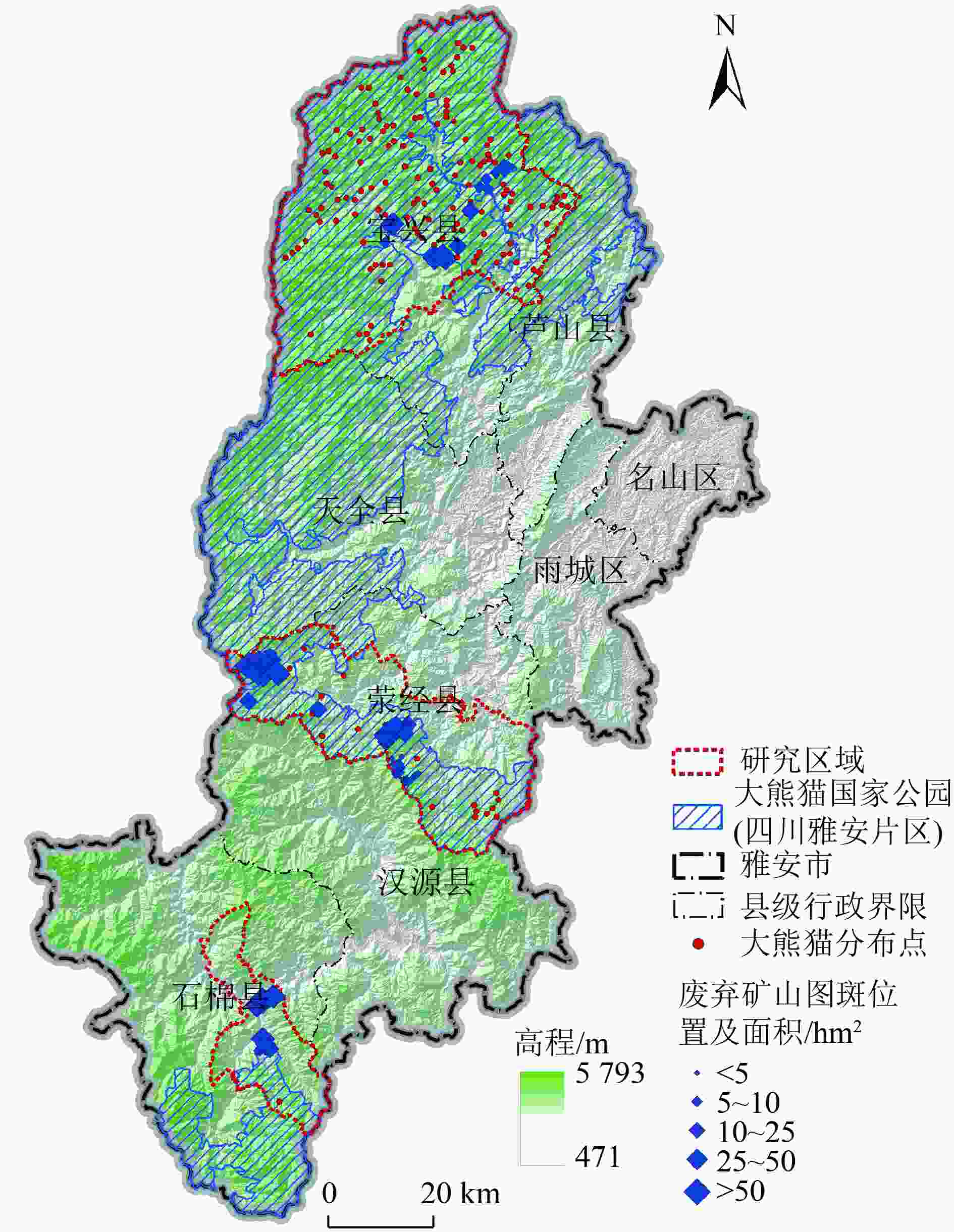
 下载:
下载:

